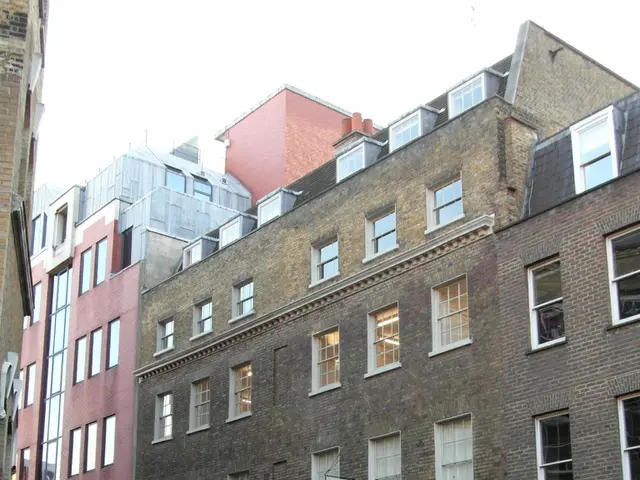Art in Motion: Examining the Depiction of Motion in Paintings
Diving headfirst into the artistic world, we've got the lowdown on how artists manipulate movement to bring their visions to life in a mesmerizing manner. Let's explore the magic behind movement in art.
What The Heck Is Movement in Art?
Movement in art is an artistic technique used to express movement through lines, shapes, colors, and composition. It's often employed to convey a message or elicit emotion from the viewer. Art that incorporates movement is known for its intrigue and ability to stimulate thought. As a result, it creates a captivating and immersive experience for viewers.
What Does Movement in Art Mean, You Ask?
The significance of movement in art depends on the artist's intentions. Artists may exploit movement to:
- Showcase the emotion within the art.
- Direct the viewer's attention to a specific component of the piece.
- Convey the passage of time.
- Identify tension within the piece.
- Improve the harmony of the work.
The Different Types of Movement in Art
Movement in art comes in various flavors:
Physical
Physical movement is the most apparent form of movement in art, as it involves representing real movement in the composition. For example, a painting with a crashing wave on boulders or an athlete running on a track depicts physical movement. This sense of movement is often created using diagonal, zigzag, or curved lines. Vincent van Gogh employed circular patterns for a sweeping sense of movement in his works.
Implied
Unlike physical movement, implied movement relies on the viewer's imagination. Artists create implied movement to suggest an action rather than directly stating it. For example, a still sketch of a person falling implies that they are about to land on the ground below, but the movement is not explicitly shown in the artwork.
Artists who use implied movement often portray their subjects off-center or off-balance, like John Singer Sargent, who used this technique to convey a sense of imbalance or focus on a previous action.
Two key elements of art typically used to convey implied movement are composition and space, as they heavily influence the impression the viewer gets when they examine the piece.
Optical
Optical movement is an ingenious technique that uses the juxtaposition of lines, colors, and patterns to create an optical illusion. These illusions enable the human eye to perceive an image within an image, making them alluring and thought-provoking. Optical illusions in art became especially popular during the Op Art movement of the 1960s, even though they had been gaining prominence since the early 20th century. Victor Vasarely, for instance, created an optical illusion artwork in the 1930s showcasing intertwined zebras.
Artists can create optical movement by employing color, lines, and repeated patterns.
Showcasing Movement in Art
Artists use several techniques to create the illusion of movement in their pieces. The technique used depends on the medium. For example, a painter might rely more on brushwork, while an artist working in pencil drawings may utilize lines to imply movement.
Using Color and Lines
Color and lines play significant roles in implying movement in a piece of art. Artists who rely on color to show movement may adjust the tones to help the viewer traverse the piece thoughtfully. By employing more vibrant hues around the focal point of the piece, they grab the viewer's attention and maintain it on a particular part of the artwork. On the other hand, cooler tones lure the viewer's attention naturally to a focal point and hold it for a longer period.
Lines, however, are mainly employed to convey physical movement. Lines define a piece and can also portray action occurring within the artwork. Artists can employ various lines to show movement, such as:
- Leading lines, which draw the viewer's eyes to a specific focal point.
- Zigzag lines, which express excitement or activity and convey movement.
- Diagonal lines, which highlight the direction of movement or instability.
- Curved lines, which depict a more natural, tranquil movement and contribute emotion to an artwork.
The Role of Brushwork
Painters often employ brushwork techniques to create a feeling of dynamism and movement in a piece. Brushwork techniques that can suggest movement include:
- Gestural brushwork, which exhibits soft, gentle movements and adds a sense of spontaneity.
- Controlled brushwork, which showcases restricted or constrained movement and is often employed to convey a feeling of order or structure.
- Sweeping brushwork, which depicts flowing movement.
- Short strokes, which give the impression that the movement is interrupted or unexpected.
Artists frequently use their brushstrokes to emphasize the intention of their piece and direct the viewer's eyes to specific areas of their painting.
The Impact of Texture and Scale
Texture significantly influences movement in art, especially in impressionist paintings. The intensity and placement of the texture within the piece have a considerable impact on conveying movement, particularly for depicting fabric elements.
Scale and proportion also play a considerable role in still-life paintings and drawings. By strategically placing objects in the foreground and adjusting their size relative to the rest of the piece, artists can imply movement in the background.
The Notable Artists Capturing Movement
- Edgar Degas (1834–1917)
- Noted for his depictions of dancers and horseback riders, Degas' use of bold lines and expressive poses effectively captured the energy and movement of his subjects, even in static poses.
- Notable works include The Dance Class and a series of ballet paintings.
- Jackson Pollock (1912–1956)
- As an American painter recognized for his abstract expressionist art, Pollock conveyed movement by using his iconic drip technique.
- Isamu Noguchi (1904–1988)
- The celebrated American sculptor used patterns and shapes as part of the biomorphism movement to express activity in his works.
- Fernand Leger (1881–1955)
- One of the key artists in the pop art movement, Leger used patterns and lines to create the impression of movement.
These artists have significantly influenced the representation of movement in various art forms.
In discussing the roles of education-and-self-development and lifestyle, we may explore how an understanding of art history and artistic techniques such as movement in art can contribute to a fulfilling, well-rounded lifestyle. For instance, learning about the works of artists like Edgar Degas, Jackson Pollock, Isamu Noguchi, and Fernand Leger could inspire self-expression and creativity, fostering personal growth and enhancing one's artistic lifestyle.
Moreover, engaging in activities that involve appreciating and creating movement in art, like visiting art galleries or trying various art mediums, can lead to increased self-awareness and empathy for others, further enriching one's lifestyle and education-and-self-development journey.






